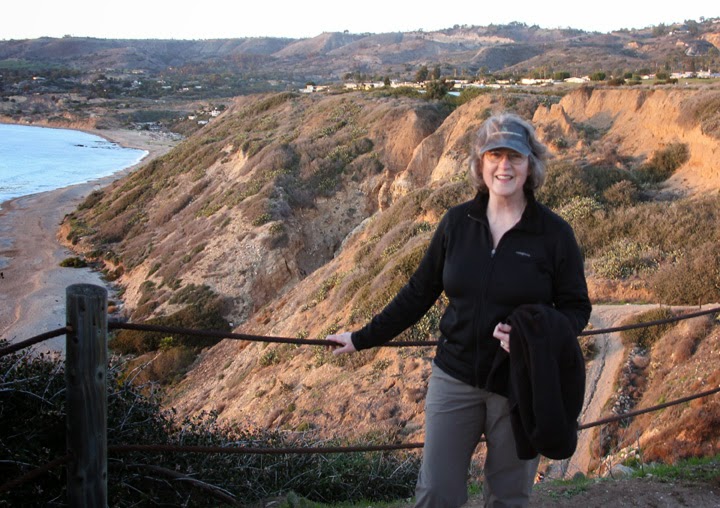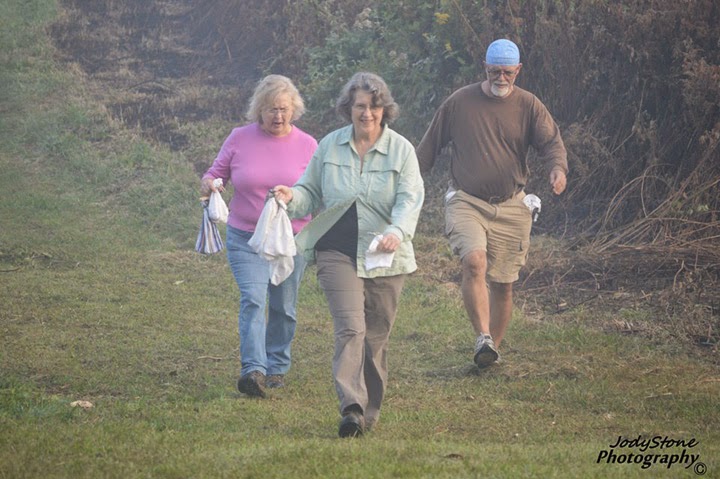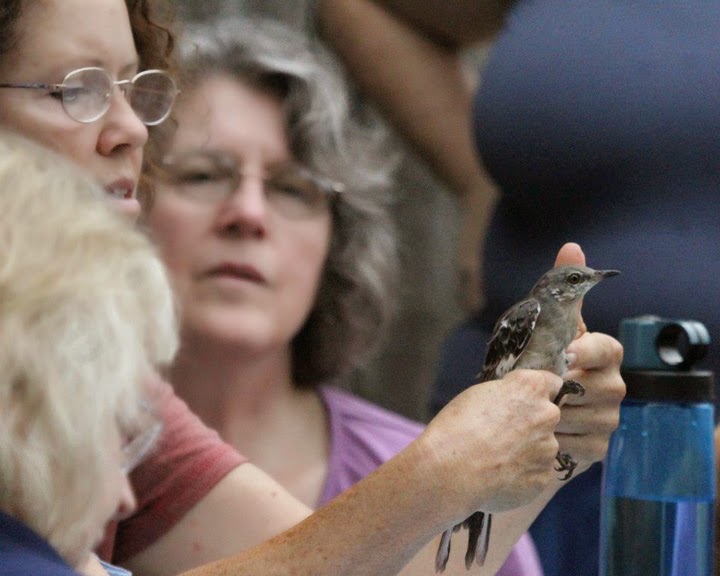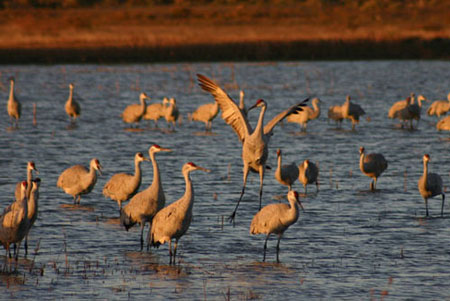Bluebirds are not your typical feeder birds, however. Their natural winter diet consists of spiders, berries and fruits. If these foods are available they can maintain fat reserves that sustain them during the extreme cold. T. David Pitts, in his book, Studying Eastern Bluebirds, A Biologist's Report and Reflections, also says the following: "As a result of their high rate of metabolism, bluebirds can quickly use the fat they store. If extremely cold temperatures linger for several days, many bluebirds may die since they normally store only enough fat to protect themelves for a day or so, and they may not be able to find enough food to replace the fat that has been used."
A male Eastern Bluebird feeding on the berries of the burning bush.
Pitts also conducted extensive studies in northwest Tennessee that revealed that bluebirds do not digest the seeds that are in the fruits they eat. These seeds pass through their system undigested and provide no nutritional benefit. Herein lies the challenge. A non-seed eating bird that primarily recognizes insects, spiders and berries as food. How do you feed them when winter gets rough?
And even more challenging, how do your feed them when larger, territorial birds are chasing them away from the berry sources?
Female Eastern Bluebird, above and below.
I had this challenge over the past week, when freezing rain and sleet coated everything with ice and temperatures plummeted to single digits with windchills below zero. Suet crumbs froze, mealworms froze and larger birds, such as American Robins and Mockingbirds became aggressive, chasing smaller birds, like bluebirds and Hermit Thrushes away from the berry bushes. In fact, one robin was so territorial he chased bluebirds away from both the holly and the neighboring burning bush.
One male bluebird was familiar with the mealworm feeder guard and could navigate through it and eat suet and mealworms offered there, protected from larger birds. The other bluebirds that came with him did not know how to navigate the guard. With feathers fluffed against the cold and mealworms frozen motionless, there was little hope they would learn about the guard in sub-freezing conditions.
After consulting friends, Billie Cantwell and Liz Cutrone at Knoxville's Wildbirds Unlimited, I adjusted a Dinner Bell feeder to exclude larger birds by lowering the dome cover to a few inches above the tray, filled the tray with smooth "butter bark" suet pellets, small home-made suet crumbs and freeze-dried mealworms and hung it near the bluebird feeder. When the male bluebird came to the feeder, his companions soon discovered the added food source and were also able to eat from it. In their absence, I noticed the Hermit Thrush landing on the dinner bell also to eat suet.
Additional good advice-- spread your suet feeders out so if a larger bird claims one feeder, there is an alternate area for the smaller birds to visit.

In the spring you can also consider planting Sumac near the borders of your yard. In Pitts' studies in northwest Tennessee, two native species, smooth sumac and winged sumac, were the most favored fruit of bluebirds, composing 50-90% of their winter diet even when a variety of other fruits were available.
Pitts advises to plant more than one sumac spaced apart in different areas of the yard to prevent mockingbird dominance. If a group of robins or cedar waxwings flies in and takes over the holly berry supply, a protective mockingbird will likely take over the sumac next. Planting shrubs spaced far apart in different areas will give the bluebirds an alternative choice for feeding.
Northern Mockingbird in holly
More on wintering bluebirds
Previous post--Robin eating holly berries
More on feeding bluebirds
Bluebirds family videos
Previous post--Robin eating holly berries
More on feeding bluebirds
Bluebirds family videos

























